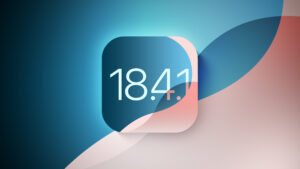Apple needs to re-discover its weird side

Over the last couple of decades, Apple has solidified its place at the top of the technology world. Dominant products like the iPod, iPhone, and iPad have made the company a household name, which in turn has elevated the profile of even its more modest businesses, like the Mac and the Apple TV.
Apple has gotten the production of its devices down to a science, and while it’s hard to argue that it hasn’t been wildly successful, it seems as though that success should afford it some opportunities to make things that are, well…less successful. (And no, I’m not talking about the Vision Pro.)
As Apple basks in its superstardom, something has gotten lost: the weird and wacky Apple. The Apple that is willing to take chances on products that won’t (and maybe never will) set the world on fire, but that might still find a viable home amongst its hundreds of millions of customers. Fortunately, there are some indications that the company may indeed be open to taking some of these risks, possibly even sooner than we think.
Home is where your smarts are
One area that Apple has only partly explored is the smart home. Yes, Apple’s history with HomeKit stretches back more than a decade, but the company has never really put its money where its ambitions are. The HomePod is the company’s only real smart home device, and while it’s fine for what it is, it doesn’t really show off what the smart home is capable of.
Apple has been reported as investigating creating smart home products, such as a security camera.
Christopher Phin
Recent reports, however, suggest that Apple may finally be diving headfirst into this category, possibly introducing a smart doorbell or a home security camera. While these aren’t necessarily the smart home devices that I’d most like to see, I do appreciate that Apple has identified a couple of places where it feels like it could make a real difference. I’ve long thought that if the company wants to really drive smart home adoption, it should build its own hardware, but it was always hard to see Apple entering commoditized categories like smart bulbs or smart switches.
Video, on the other hand, makes sense. Apple’s HomeKit Secure Video, first introduced in 2019, offers real advantages over many of the company’s competitors, such as end-to-end encryption, support across all of Apple’s platforms, and easy sharing with family. It even includes unlimited footage for a specified number of cameras, depending on which iCloud storage plan you use. But third-party implementations of this feature have often felt buggy and unreliable; arguably the best way for Apple to improve HomeKit Secure Video is to have to use it too.
I’d love to see a device like this used as a real Continuity Camera, too, as my colleague Jason Snell recently suggested. As it is, Continuity Camera is a great feature that makes video chats easy and high quality, hampered only by requiring you to give up access to your phone, something a small standalone device could do quite well.
You’re in command
Speaking of the home, Apple’s rumored smart speaker with a screen project–which could debut sometime this year–is another example of the company trying something a little different. This will almost certainly never be a barn-burner, as it appeals predominantly to those who already own and use smart home tech, a self-selecting customer base, for sure.
The HomePod started to scratch that itch, and while that product line has had it successes, it’s been hampered by an overpriced initial offering and the continued unreliability of Siri, something that Apple Intelligence might be poised to help correct.
But, ultimately, what makes this an ideal category for Apple is that while competitors have attempted this, there’s no clear winner yet. Amazon’s Echo Show and Google’s Nest Hub may have paved the way, but neither of them has proved to be a huge success, and the lack of in-depth integration with Apple’s ecosystems prevents them from delivering the kind of experience that the company’s customers tend to want. Add in the huge number of hobbyist projects that have flirted with bringing your data into a screen you can place around your house–Tidbyt, TRMNL, LaMetric TIME–and it’s clear there’s an appetite for this functionality, even if nobody has quite cracked it yet.
Smart glasses are half-full
A recent report from Bloomberg suggested that Apple had ended the development of a project to build smart glasses that could connect to a Mac. Given what seem to be fundamental limitations with that specific device (requiring a Mac, for example), that decision hardly seems unreasonable.
But it does open the question of what more Apple could be doing in the wearable market. The Apple Watch and AirPods have been reasonably big hits, but surely they aren’t the only options for devices that customers might want to wear. Apple seems to be moving towards smart glasses, but the technology to deliver their idea of the future clearly isn’t ready yet.
Jim Martin / Foundry
Still, there are other options in that area too: smart rings, wearable fitness bands, and other forms of smart glasses, like Meta’s Ray-Bans, have all proved to have some degree of following, and all of them would seem to be well within Apple’s capability. Would it kill the company to take a couple of flyers on other products, especially when the benefits would accrue not only to this category but also likely to Apple’s Services division and overall bottom line?
In fact, one interesting thing linking a lot of these products together: they all fall within the confines of the category on Apple’s balance sheet entitled “Wearables, Home and Accessories.” Which makes sense: among other things, that means they don’t have to be broken out into individual profit & loss statements (externally, at least). It’s the perfect place for Apple to play with products without subjecting them to the weight of the expectations placed on the iPhone, Mac, or iPad.



